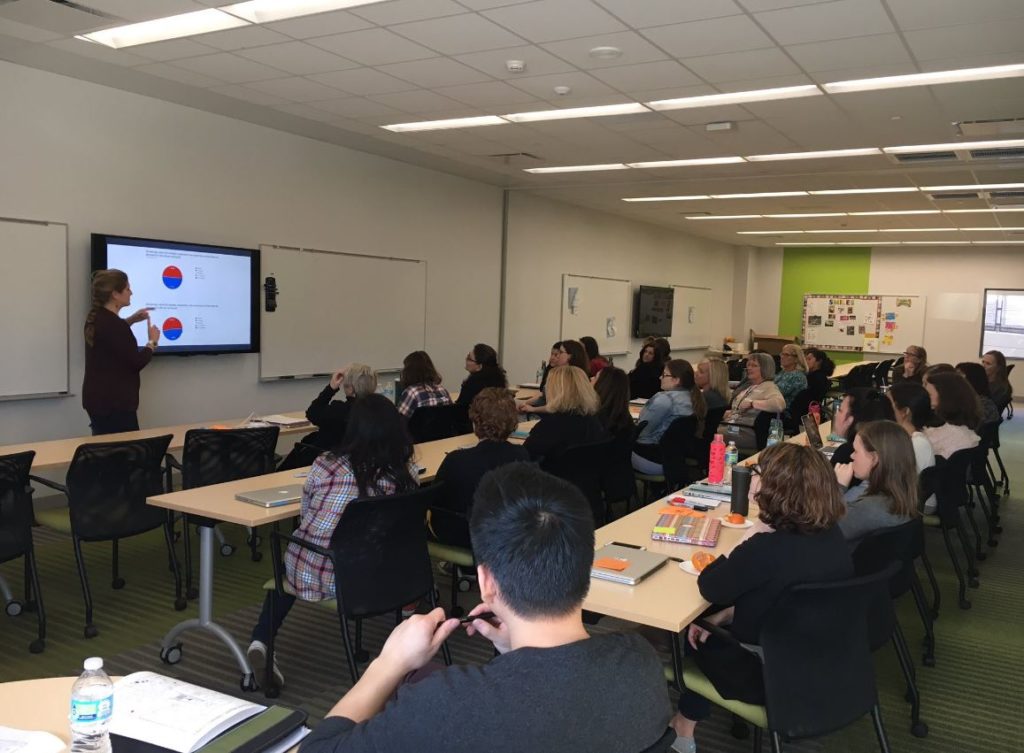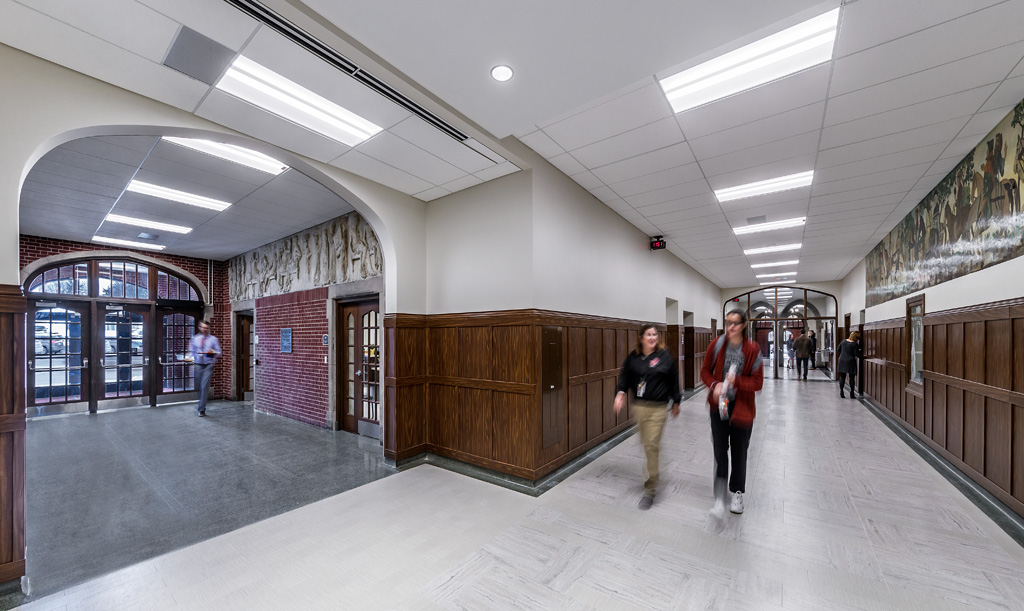When the time comes to start planning for school construction projects, excitement abounds. In many instances, the project offers a once-in-a-generation opportunity to redefine a school’s image within the community and create spaces that will inspire student enthusiasm for learning.

Regrettably, as they debate different layouts or discuss space types, architects and school stakeholders leave out one critical step: research. Introducing a research phase into the school design process enables committees to unveil what is special about a school and integrate it into the design of new construction or renovations. Potential discoveries during the research phase include tidbits about a school’s history, surprising facts about a community’s legacy, unique elements of a region’s geographic composition, or even scientific evidence about how students learn best. Research-driven design creates an opportunity to integrate each of these discoveries into the design of a school.
The following case studies, ranging from an early learning center to a 100-year-old high school, exemplify three ways that school leaders and architects can integrate research into the design process.

Make Nature Center Stage: CCSD 59 Early Learning Center
The human-nature connection creates a dichotomy: while we want to be close to nature — the term for this is “biophilia” — we spend less and less time outdoors. Research shows that school design that integrates the natural world, whether through materials and colors or views, results in calmer, more focused students. And yet, so many students are spending their formative years in dark, dated facilities devoid of nature. One of the designer’s jobs, therefore, is to integrate nature into designs.

Biophilia guided design of the Community Consolidated School District 59 (CCSD59) Early Learning Center. Early discussions with teachers and community members revealed the importance of natural connections. Outdoor learning was so important, in fact, that interior spaces were designed around outdoor areas.
The school embraces a large central courtyard and three early learning gardens. These areas, all of them secure and filled with daylight, offer young learners many opportunities to connect with nature. The sensory garden, for instance, has sand and water elements, while the nature garden enables students to learn about natural life cycles and agronomy.
When students enter the school, they experience an interior aesthetic that borrows from the liveliness of the outdoor spaces. Curving floor patterns and bright colors identify breakout areas with views of the gardens. The space that displays the nature garden even has a small culinary arts area with a child-sized counter where students can sample foods grown in the garden.

Do a Test Drive and Highlight History: LaSalle-Peru High School
Each school has a unique backstory. When it comes time for renovations or expansions, that history often gets overlooked. That’s unfortunate since there are many opportunities to capitalize on that history to give a school its own identity.
When LaSalle-Peru Township High School District 120 set out to renovate most of its high school’s spaces, community members were concerned about how the project could fit 21st century learning into the near century-old building without ruining its historic character.

To show them it was possible, we turned to research and designed a model classroom before the referendum election. Manufacturers provided different furniture options for students and teachers to “test drive.” The mobile furnishings allowed classes to quickly rearrange rooms, while new carpet squares led to quieter learning areas.
After observation and surveys revealed improved teaching and learning outcomes in the model classroom, an article in the local newspaper showed how the space enhanced learning while staying respectful of the historical architecture. The article helped sway the community to pass a $38 million referendum.

After two and a half years of construction, the school emerged as a model for reviving older buildings without destroying their historic integrity. Renovations renew 90% of interior spaces. After doing color research, Legat Architects’ interior design team created a color scheme that features not only contemporary colors, but also popular colors from the 1920s (when the school was built). The project also includes infrastructure repairs such as window/roofing replacements and HVAC upgrades.


When they returned after the renovations, many students and teachers thought the walls had been moved out to provide more space. They had not. Before the upgrades, some walls had been painted school colors (bright red and green), which led to distractions and an overcrowded feeling. The renovations use lighter colors and finishes to neutralize the backdrop and create the impression of larger spaces — the students become the color. Additionally, vinyl wall coverings help integrate the history of the school.

Celebrate Surroundings and Respect Age Groups: Laraway School
What cultural and geographic landmarks are near a school? What are the unique industrial origins of the school’s region? Sadly, school designers often miss the opportunity to tell a story about a school’s location. Not so with Laraway School (Joliet, Illinois), winner of the Association for Learning Environments’ John H. Shaw Award for design and community planning. The project team’s research about the Joliet region’s rich legacy in quarrying and farming informed materials, patterns, finishes, and even the overall layout of the school.

A pre-occupancy survey showed that stakeholders prioritized outdoor learning. Legat drew from research on the restorative qualities of nature to design the school around a central courtyard used for learning and community events.
The Wauponsee Glacial Trail in south Joliet inspired the corridor that bisects the school. A stone “quarry wall,” which pays tribute to the city’s famous limestone, connects the main and events entries, and flows through the school. Additionally, Joliet’s farming history influenced the linear layout, east/west orientation, and floor/lighting patterns.

The separation of age groups also played an important role in the design of Laraway School. The pre-occupancy study showed that Laraway Community Consolidated School District 70C leaders were concerned about the possibility of older students bullying younger ones. The design responds with four grade level neighborhoods: preK-1 (Little Learners), grades 2 – 3, grades 4 – 5, and grades 6 – 8. Older and younger students rarely cross paths.
To determine the layout’s effectiveness at preventing bullying, a Northwestern University behavioral scientist conducted pre- and post-occupancy surveys with teachers and students. The results revealed that bullying decreased dramatically.
These three examples prove that schools have the potential to become exceptional learning environments rooted in the input of students, staff, and community members. Getting at the essence of each project required finding what was extraordinary about the schools. To make that happen, each of these projects started and ended with research.

